Among the myriad of ingredients in cuisine, many have chosen to use chili powder to add spice to their dishes, especially in European and American cuisine. Apart from traditional Vietnamese chili powder, many people have also used varieties originating from foreign countries.
These imported chili powders have various names, leaving people confused. One such term is “Paprika.” So, what is Paprika chili powder? What are its components and uses? Let’s explore the information below.
1 What is Paprika?
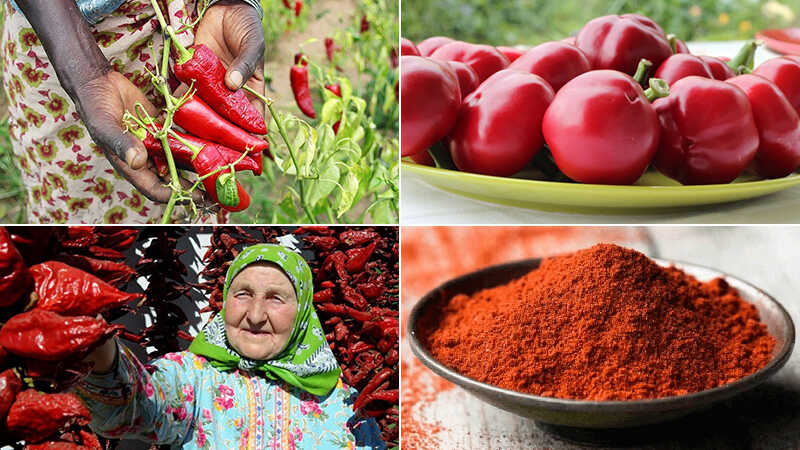 Origin of Paprika Chili Powder
Origin of Paprika Chili Powder
Paprika is a Hungarian chili powder made from Capsicum peppers (bell peppers or sweet peppers), with the most common variety being tomato peppers. After harvesting, these peppers are sun-dried and then ground into a fine powder. The resulting Paprika chili powder has an eye-catching deep red color and its spiciness can range from mild to medium-hot.
2 Origin of Paprika
Although Paprika is considered a symbol of Hungarian cuisine, its origins lie in Turkey. The Turks introduced this type of chili to Hungary during their occupation in the 16th and 17th centuries. Shepherds and cattle breeders were the first to use Paprika to spice up their meals.
Gradually, this chili powder became popular among Hungarian peasants. The nobility soon discovered its unique spiciness and vibrant color, incorporating it into their daily meals. By the 19th century, Paprika had become the dominant spice in numerous dishes across Hungary.
3 Components of Paprika Chili Powder
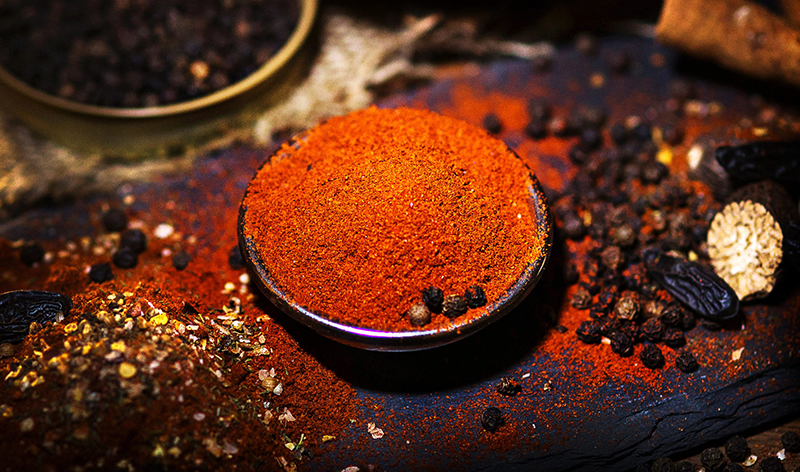
There are mainly two types of Paprika chili powder
– Mild Paprika: Made primarily from the pepper’s outer skin and only half the number of seeds.
– Spicy Paprika: Also made from the outer skin but with a higher proportion of seeds. Additionally, it includes the pepper’s stem, ovary, and sepals.
According to Draxe, a tablespoon of Paprika chili powder contains various nutrients, including Calories (20), Carbohydrates (3.8g), Protein (1g), Fat (0.9g), Dietary Fiber (2.5g), Vitamin A (3.56 UI), Vitamin E (0.3mg), Vitamin K (2mg), Vitamin B6 (1.6mg), Iron (4.8mg), Potassium (5.4 micrograms), Riboflavin (0.1mg), Vitamin C (1mg), and Magnesium (158mg), among others.
4 Health Benefits of Paprika Chili Powder
According to Healthline, numerous studies have proven the health benefits of the components found in Paprika chili powder. Specifically:
Good for Eye Health

A study involving over 1,800 women found that those with a diet rich in Lutein and Zeaxanthin had a 32% lower risk of developing cataracts compared to those with lower intakes.
Another study of 4,519 adults concluded that higher intakes of Lutein and Zeaxanthin could reduce the risk of age-related macular degeneration (AMD).
Thus, these nutrients can potentially improve eye health and reduce the risk of cataracts and AMD.
Pain Relief and Anti-Inflammatory Properties

Paprika chili powder contains Capsaicin, a compound that can bind to receptors in nerve cells to reduce inflammation and pain. As a result, it may help prevent inflammatory conditions such as arthritis, nerve damage, and digestive issues.
This was demonstrated in a study of 376 adults with digestive problems. When Capsaicin was introduced to their diet, significant improvements were observed in gastric inflammation and damage.
Improved Heart Health

In a 14-day study, mice fed a diet of Paprika and Capsanthin showed significantly increased levels of good cholesterol compared to those on a controlled diet.
Additionally, a 12-week study involving 100 healthy adults found that those who consumed a dietary supplement containing 9mg of Paprika Carotenoids per day had lower levels of bad cholesterol and total cholesterol compared to those taking a placebo.
Therefore, Paprika chili powder, due to its Carotenoid content, can help reduce harmful cholesterol levels while increasing beneficial cholesterol, leading to gradual improvements in cardiovascular health.
Cancer Prevention
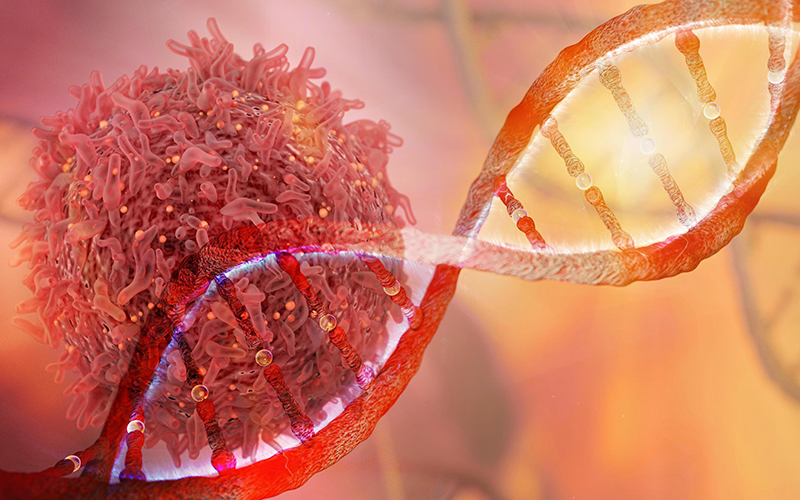
Some Carotenoids in Paprika chili powder, such as Beta-Carotene, Lutein, and Zeaxanthin, can combat Oxidative stress, a factor that increases the risk of cancer.
Specifically, a study involving approximately 2,000 women found that those with the highest blood levels of Beta-Carotene, Lutein, Zeaxanthin, and total Carotenoids had a 25-35% lower risk of developing breast cancer.
Blood Sugar Control

Capsaicin in Paprika chili powder is effective in controlling diabetes by influencing related genes and inhibiting enzymes that break down sugars in the body.
Additionally, a four-week study involving 42 pregnant women with diabetes found that consuming 5mg of Capsaicin per day significantly reduced blood sugar levels after meals compared to a placebo.
Another four-week study involving 36 adults showed that a diet containing Paprika with Capsaicin significantly lowered blood Insulin levels after meals compared to a diet without chili. Typically, lower Insulin levels help maintain better blood sugar control.
5 How to Use Paprika
Paprika can be used like any other spice, mainly to add vibrant color to dishes and infuse a sweet and spicy kick (especially in stews, soups, and casseroles).
Additionally, Paprika is excellent for marinating meats and fish before cooking. Creating a paprika-infused oil by heating the spice in a pan with oil can result in a delicious and unique flavor. Hungarians often pair dishes containing Paprika with Kadarka wine to enhance the dining experience.
6 Uses of Paprika
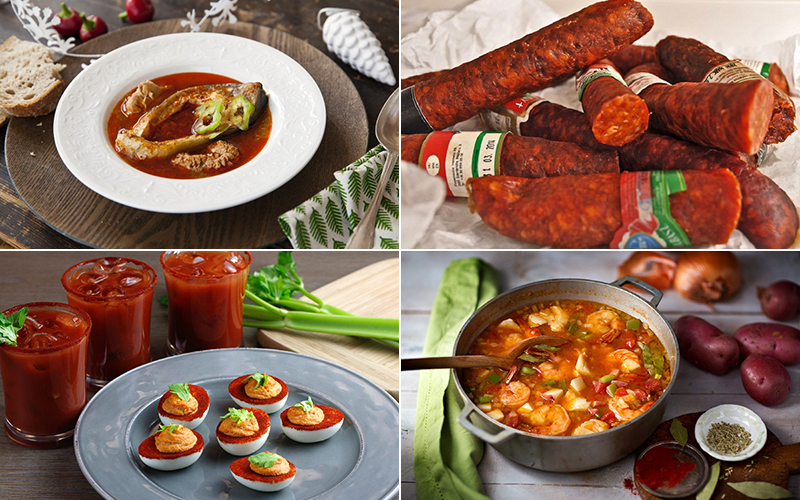 Paprika Used as a Culinary Ingredient
Paprika Used as a Culinary Ingredient
Paprika is used in cooking like any other spice, especially to add vibrant color and a distinctive sweet and spicy flavor to dishes. Examples include Hungarian fish soup, stuffed cabbage, smoked dishes, boiled dishes, and goulash, among others.
Additionally, you can use Paprika to marinate various ingredients such as meats, fish, and vegetables before cooking. Creating a paprika-infused oil by heating the spice in a pan with oil can result in a delicious and unique flavor. When enjoying dishes containing Paprika, Hungarians often pair them with Kadarka wine to enhance the dining experience.
7 Delicious Dishes Made with Paprika
Hungarian Fish Soup (Halászlé)
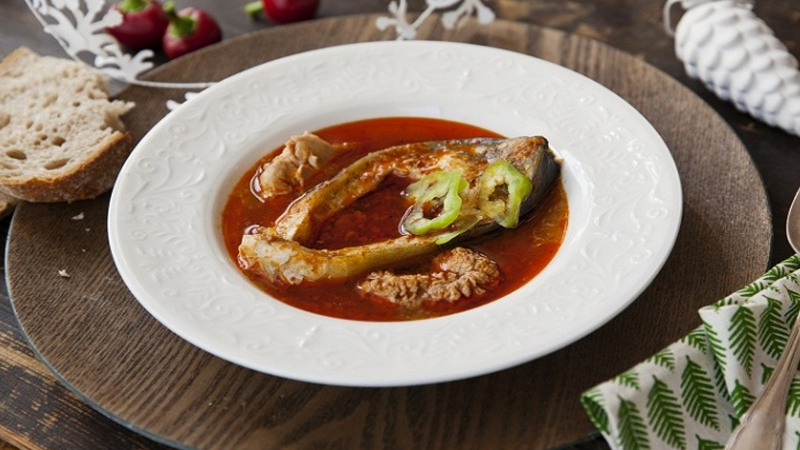 Hungarian Fish Soup (Halászlé)
Hungarian Fish Soup (Halászlé)
Halászlé is a beloved fish soup in Hungary, especially during Christmas and New Year celebrations, symbolizing happiness and prosperity. Each family has its unique recipe, contributing to the diverse and rich character of this dish.
Stuffed Cabbage (Töltött Káposzta)
 Stuffed Cabbage (Töltött Káposzta)
Stuffed Cabbage (Töltött Káposzta)
Töltött káposzta, or stuffed cabbage, is a famous dish in Hungarian cuisine. The cabbage is briefly boiled, then used to wrap a filling made of minced meat, spices, and paprika. These cabbage rolls are then steamed, and a sour cream sauce is poured over them before serving.
Smoked Sausage (Kolbász)
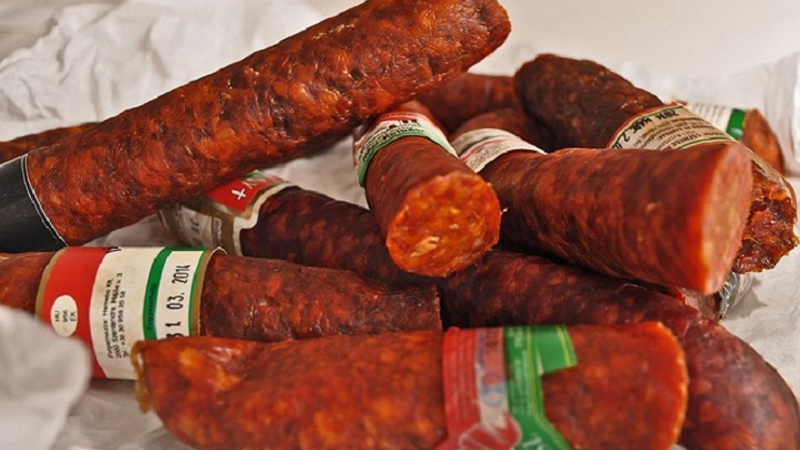 Smoked Sausage (Kolbász)
Smoked Sausage (Kolbász)
Kolbász is a traditional Hungarian dish made from smoked meat, pork, beef, or mutton marinated with spices such as Paprika, nutmeg, garlic, salt, pepper, sugar, marjoram, cognac, or wine. After the flavors are absorbed, the mixture is stuffed into pork casings and hung overnight before being lightly smoked.
When serving, slice the sausage thinly and pair it with chili sauce or enjoy it with bread.
We hope that through this article, you have gained a better understanding of Paprika chili powder. Feel free to incorporate it into your family’s meals to enhance the flavor and promote better health.
Read More
>>
>>



































